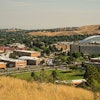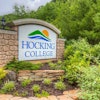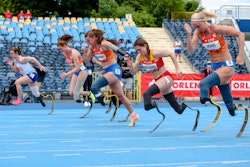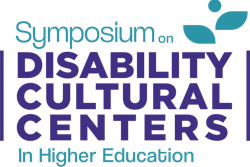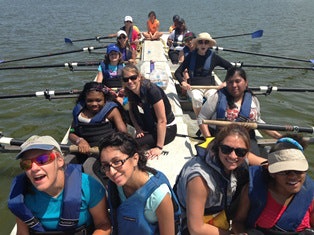 The Initiative for Women With Disabilities taught rowing skills through its Young Women’s Program Rowing Camp 2014.
The Initiative for Women With Disabilities taught rowing skills through its Young Women’s Program Rowing Camp 2014.A participant may walk into New York University’s Initiative for Women with Disabilities (IWD) at the Elly & Steve Hammerman Health & Wellness Center’s Second Avenue offices for a nutrition consultation and come out having addressed other needs through a routine medical examination or a Reiki restorative yoga class. Social worker Alena Gerst maintains this is done through a holistic approach. “We are able to provide the best quality care by communicating with each other,” says Gerst, who has been with the comprehensive wellness center since 2011.
From primary care visits to gynecological exams to acupuncture and even hairstyling, the center is a catchall space for about 400 women with physical disabilities in Manhattan. It works at preventing osteoporosis, heart disease, musculoskeletal pain and other ailments by promoting a holistic, healthy lifestyle. “Participants feel that this is their home away from home. And they come here and feel very safe,” says Connie Lam, the initiative’s program manager, who has worked at the center for 12 years.
“We started out as a [gynecological] practice. We started growing and doing a lot of wellness services as each year passed,” says Lam.
Indeed, Gerst adds that treating the whole person is a relatively new trend in medicine, and the fact that the center has emphasized it for so long puts it ahead of the game. “Our center is really cutting edge,” she says.
As follows, the women are noticeably not called patients. “Our team meets and we really try to coordinate a plan of care for women that are coming in. This is not a place you go when you are sick — it’s a place you go for overall self-care and wellness,” says Suzanne Hurtwitz, coordinator of the Young Women’s Program.
“If someone doesn’t show up for class, she’s going to get a phone call. It’s a real place for people to come and be able to socialize, and that has positive outcomes for their health,” says Gerst.
The Young Women’s Program is unique in that it is designed for 14- to 21-year-olds in the city who might not have traveled on their own prior to joining it. “A lot of them are coming from schools where they are the only student with a disability. To be able to come here and find common ground is a really important thing. [It is important] to get them thinking about their health and wellness at a young age and encourage them,” says Hurwitz.
Through a survey that was completed in June, the center identified the top five skills that participants indicated they wanted to learn: creating a home medical file, accessing doctor’s phone numbers, making their own doctor’s appointments, carrying important health information and explaining their health care needs to others.
“We see what the outcome of our centers is through participant surveys, so that’s how we plan for future programming and assess what we’re doing,” says Hurwitz.
Teaching the girls about resources, learning new skills from experts, and allowing them to share feelings and concerns are all part of the programming.
“They offer each other support as they take a lot of big risks in life,” says Gerst, adding that things like moving out of their parents’ house and striving for independence are often discussed.
This reliance on others can often take a toll on the self-esteem of young women, a study from the Center for Research on Women with Disabilities at Baylor University found. Taking part in the Young Women’s Program means using paratransit alone for the first time and talking about issues they’ve faced with others. “We prepare them for adulthood,” says Lam. The program is free, after school, and offers homework help, personal care assistance, and dinner and snacks too.
For older women, the initiative’s Empowerment Program works to strengthen living skills and offers enrichment activities for 21- to 32-year-olds. “They need accessible places to go, places where they can use their wheelchair. But they also need to be able to connect with each other, with other people who have similar challenges. We have everything in-house here,” says Gerst. “It’s powerful. We have had ladies have some major, major breakthroughs from our in-depth workshops.”
Gigi Pardo-Lord, a participant who joined the center in 2004, says the relationships she has established with women like her are very important. “It’s the whole package,” she notes. “It’s equal to none.”
Another area that has been expanding is the center’s adaptive sports program. In February 2014, the initiative took participants to Crested Butte, Colorado, for a ski trip. Next February, it plans to take participants to Park City, Utah, to the National Ability Center.
“We’ve found that the adaptive sports program can really work to boost self-esteem and confidence that can transfer to other areas of life,” says Hurwitz.
Origins and expansion
Launched in 1997, IWD expanded shortly after to include wellness services through a gift from Elly and Steve Hammerman, whose granddaughter Stephanie had cerebral palsy. While the lack of gynecological services for women with disabilities was the impetus for its founding, the initiative has grown to focus on much more. In 2011, the center was able to move to a freestanding, wheelchair-accessible, state-of-the-art facility in Gramercy Park.
“We’re all in the same building, so the nurse practitioner can call and say, ‘Can you come up right now and just meet this person?’” says Gerst, pointing out that having everything under one umbrella is critical.
About 27 million women in the United States have a disability and that number is growing, according to the Centers for Disease Control and Prevention. Thus, the need for services is only increasing.
“We don’t know of any other centers like this across the country or even city,” says Lam. About eight full-time staffers and 20 fitness instructors make up her team, which has seen many success stories come out of the center. “We have young women participants who have gone on to college to finish their bachelor’s and even graduate degrees,” she notes.
Although the center mostly works with area high schools and nonprofit organizations to reach out to participants, it also makes its presence known to the NYU faculty and community, meeting with patients even before they are discharged from NYU’s Langone Medical Center, the overarching medical center that houses the initiative and center. “We want faculty to know that we’re here and we’re a referral source,” says Gerst. “The interdisciplinary aspect here is a real benefit for the patients.”
With about 3,000 participants, the center might also serve as a resource for research and discussion, says Lam. “I think down the road we want to do some research because we are doing a lot here for the disabled population and we have some interesting data going on in this center.”
However, for now the center will continue to fulfill its current mission, which is to provide comprehensive wellness services. “We’re all working with the same mission in mind, so I think participants really benefit from that,” says Gerst.

